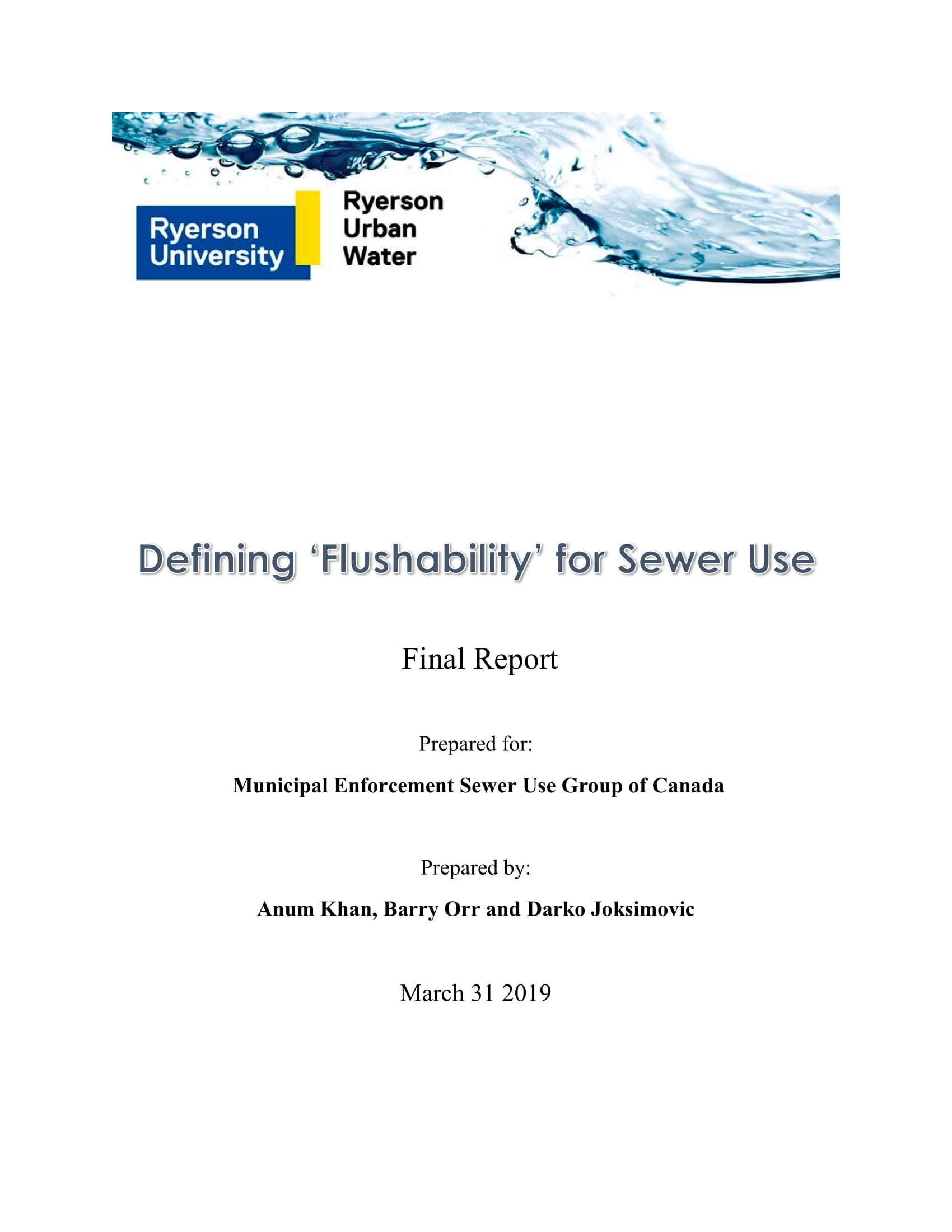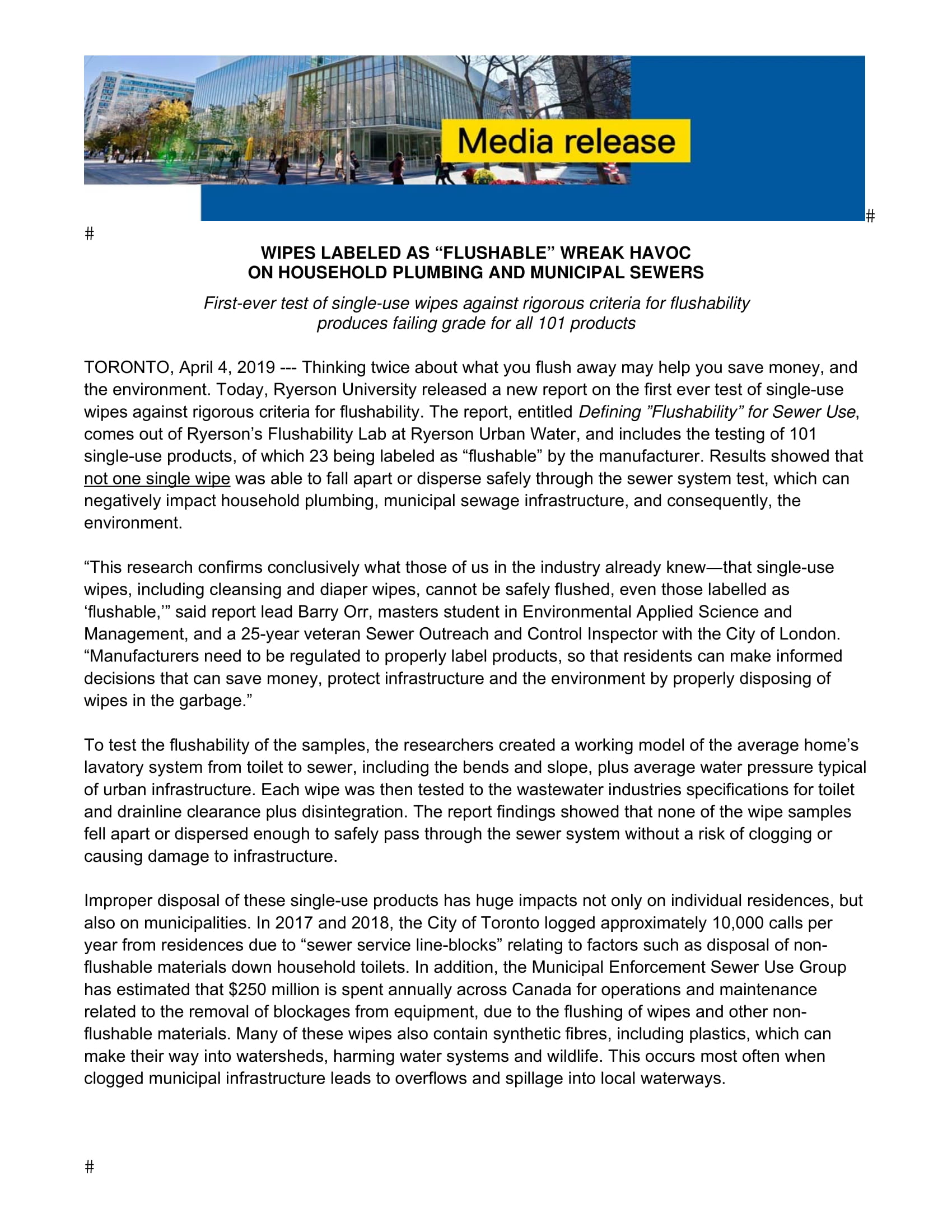Defining 'Flushability' for Sewer Use
Defining 'Flushability' for Sewer Use
Thinking twice about what you flush away may help you save money, and the environment. Toronto Metropolitan University released a new report on the first ever test of single-use wipes against rigorous criteria for flushability. The report, entitled Defining ”Flushability” for Sewer Use, comes out of Ryerson’s Flushability Lab at Urban Water TMU, and includes the testing of 101 single-use products, of which 23 being labeled as “flushable” by the manufacturer. Results showed that not one single wipe was able to fall apart or disperse safely through the sewer system test, which can negatively impact household plumbing, municipal sewage infrastructure, and consequently, the environment.
To test the flushability of the samples, the researchers created a working model of the average home’s lavatory system from toilet to sewer, including the bends and slope, plus average water pressure typical of urban infrastructure. Each wipe was then tested to the wastewater industries specifications for toilet and drainline clearance plus disintegration. The report findings showed that none of the wipe samples fell apart or dispersed enough to safely pass through the sewer system without a risk of clogging or causing damage to infrastructure.
“This important new research out of Urban Water TMU exemplifies the unintended consequences that can result from everyday actions taken by individuals and organizations,” added Nick Reid, Executive Director of Urban Water TMU. “Healthy cities depend on healthy urban water strategies, and we all play a vital role in this very delicate ecosystem.”
For more recent research see here.



The flushability report explains the core findings from the project and how they will be addressed moving forward.

The media release highlights the intentions of the project and the findings in a short summary.